
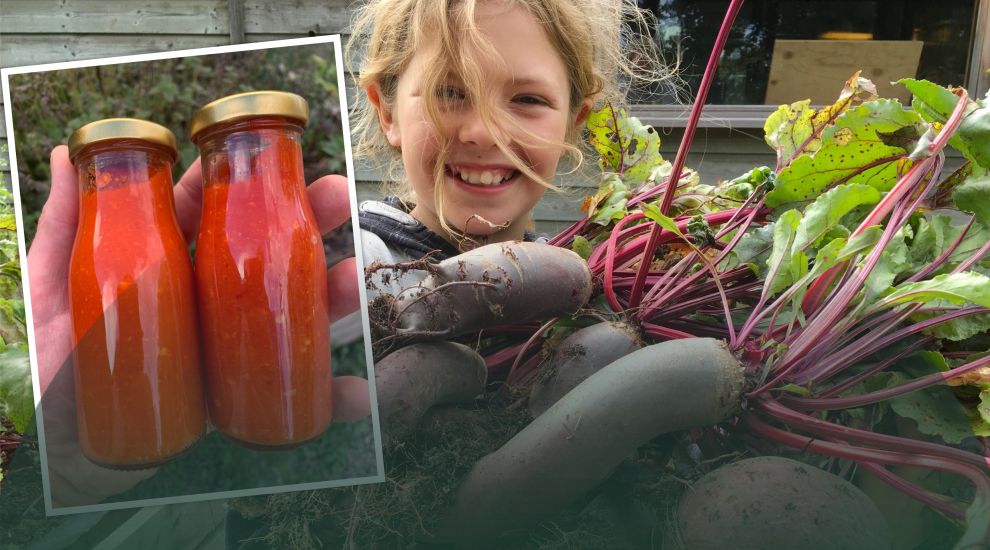

Winter is coming... And Scoop has shared simple recipes for fermented chili sauce and sauerkraut that will not only bring delicious flavours to your meal but also help boost your immune system before temperature drops.
For this week's Charity Chomp, the team behind The Sustainable Cooperative (SCOOP), based in St. Lawrence, have shared their favourite recipes using what's known as 'lacto-fermentation' - in other words, pickling!
Developed through "hundreds of years of know-how and knowledge sharing" as the Scoop team explained, lacto-fermentation is the process used to create Korean Kimchi, German Sauerkraut, yoghurt, traditional Eastern European dill pickles and a host of other probiotic foods, which help boost gut health and aid digestion.
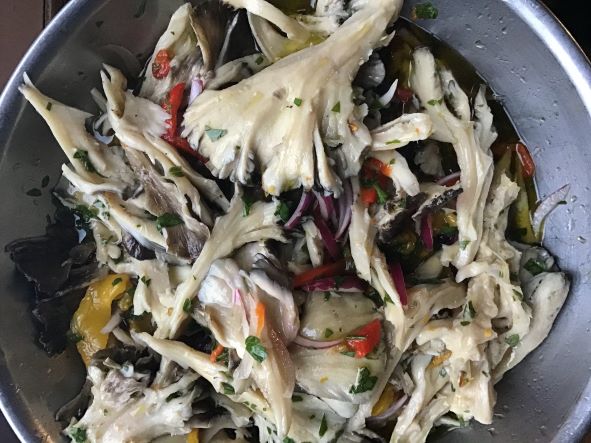
Pictured: Pickling Maitake mushrooms.
"At The Sustainable Cooperative (SCOOP), we use these traditional methods of preservation to support local growers, reduce food waste, extend the harvest season and boost health. Once you have understood the basic principles, lacto-fermentation is quick, requires little specialist equipment and is relatively easy to get a good result. So here goes with our quick guide to get you started!
"While you can ferment most foods, we will be focusing on lacto-fermented vegetables in this guide."
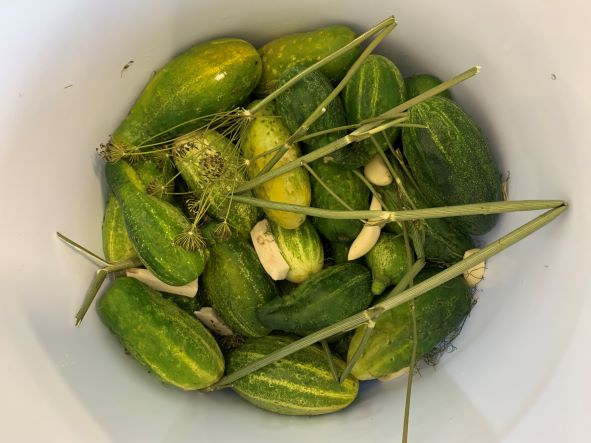
Pictured: Preparing gherkins for pickling.
There are two ways of salting vegetables, submerging them in brine (2-3% salinity), or rubbing in salt to draw out the moisture (using 2% of the weight in salt). Ferments with less salt will ferment quicker but the risk of contamination is higher.
You need to make sure that your vegetables are completely submerged under the brine when the fermentation begins, to avoid mould or yeast growth on the surface. Leave an air gap of about 3cm to the top of the jar.
Many people weigh their vegetables down with a glass weight, but you can also use larger vegetables to wedge the contents of your jar in place. Kimchi is made a little differently, by covering the surface in a delicious spicy paste.
Pictured: A Green Fermented Chilli Sauce in preparation.
Ferments produce CO2, which needs to be released during the fermentation period. This is called ‘burping’. If you use clip top Kilner jars, they self-burp, reducing the risk of any explosive situations, or mould growth following exposure to air. Place the jar in a container to catch any liquid that may bubble out.
If you see a thin white layer forming on the surface of the ferment, it is likely Kahms Yeast and a result of over exposure to air. While Kahms is harmless when digested, it can become a surface on which other moulds grow and it affects the flavour of the ferment (not in a good way).
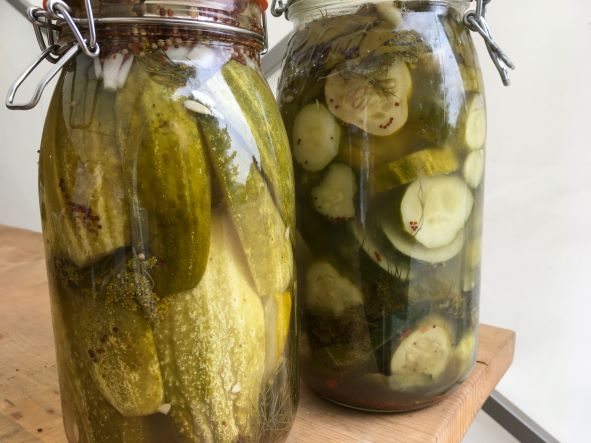
Be patient! How long you wait depends on how you like your ferment. Longer ferments will generally be more acidic and pungent. We ferment for anything between five days for Kimchi and over a year for Garlic Honey! Initial fermentation usually takes place at room temperature. The time of year will affect the speed of fermentation, with warmer temperatures resulting in faster fermentation.
When your ferment is ready keep refrigerated to pause the fermentation process.
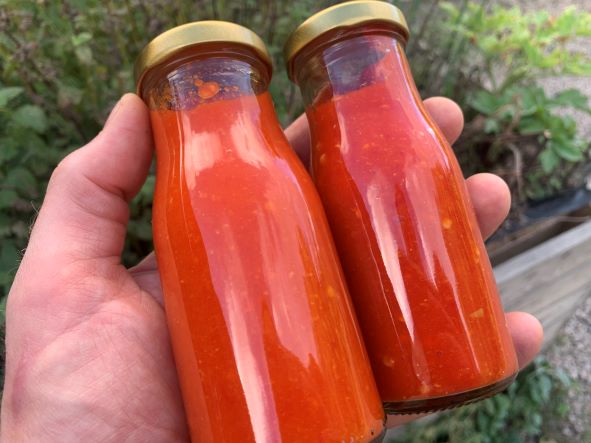
We get a lot of lovely local chillies at SCOOP, so this is a great way of preserving them for the year ahead.
Method:
Fill a clip top jar with sliced chillies, onions, garlic and carrots.
Ferment for four to eight weeks.
Blend and enjoy!
Any fiery leftover brine can be used to spice up soups, stews or rice. Be warned, chillies are very active ferments due to their high sugar content, so expect some liquid to bubble out of your container.
Variations: Try roasting half of the chillies first, or adding ginger and coriander for a thai style sauce.
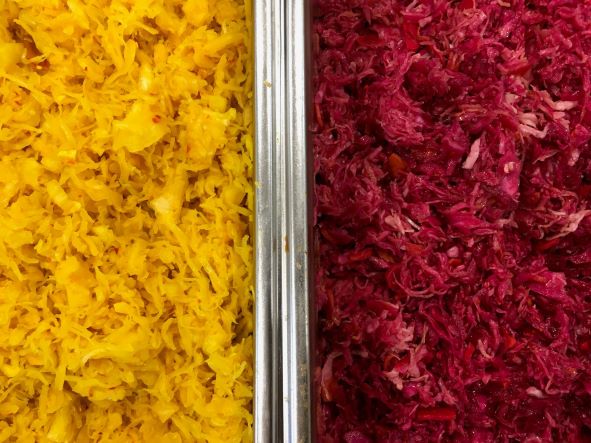
Method:
Finely shred your local cabbage.Sprinkle over some caraway seeds. You can also add grated carrot.
Rub in 2% of the weight of the vegetables in salt. Allow to sweat for about 1 hour.
Squash the salted cabbage into your jar until the cabbage water brine covers the cabbage.
Wedge the cabbage down below the surface of the brine using a glass weight, carrot sticks, or a large leaf of cabbage.
Ferment for three to 12 weeks.
Variations: Try making a probiotic coleslaw using the same method. Use carrots, celeriac, celery, turnips, kohlrabi, apples, pears and radishes, alongside herbs, onions, chillies, garlic, ginger and fresh turmeric. You can also add other fermented foods, such as miso. Don’t worry about garlic turning blue or green, it means everything is working well!
Once you have mastered the above, it’s time to try making Korean Kimchi! Anyone looking to perfect their skills is also invited to join the Fermentation Club starting in November by emailing scoop@scoop.org.je.
Remember, there's one key rule with Charity Chomp... if you think it's delicious, donate!
Scoop has chosen to support Birdsong Garden, a permaculture community garden, who work with a range of other local charities and organisations.
This recipe first featured on Bailiwick Wellbeing, your free guide to wellness in work and island life to help you start the weekend - and week ahead - in the right way. Sign up now here.
Comments
Comments on this story express the views of the commentator only, not Bailiwick Publishing. We are unable to guarantee the accuracy of any of those comments.